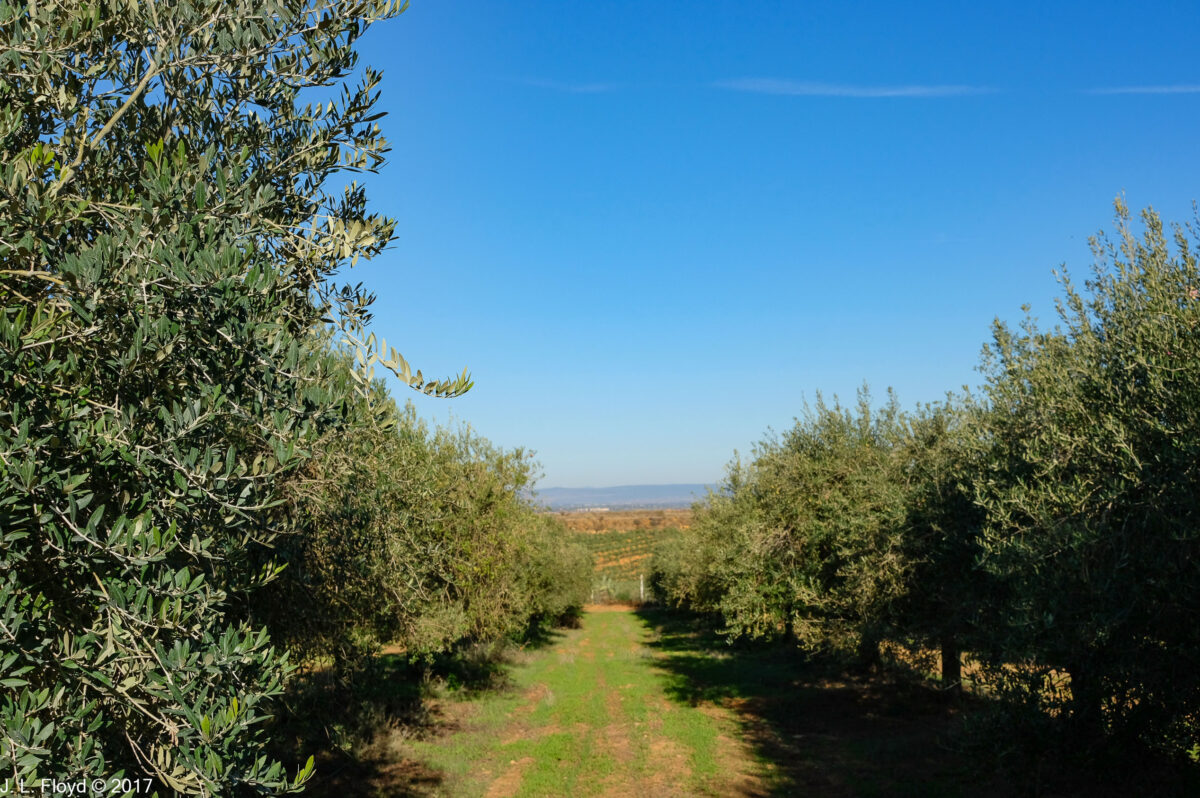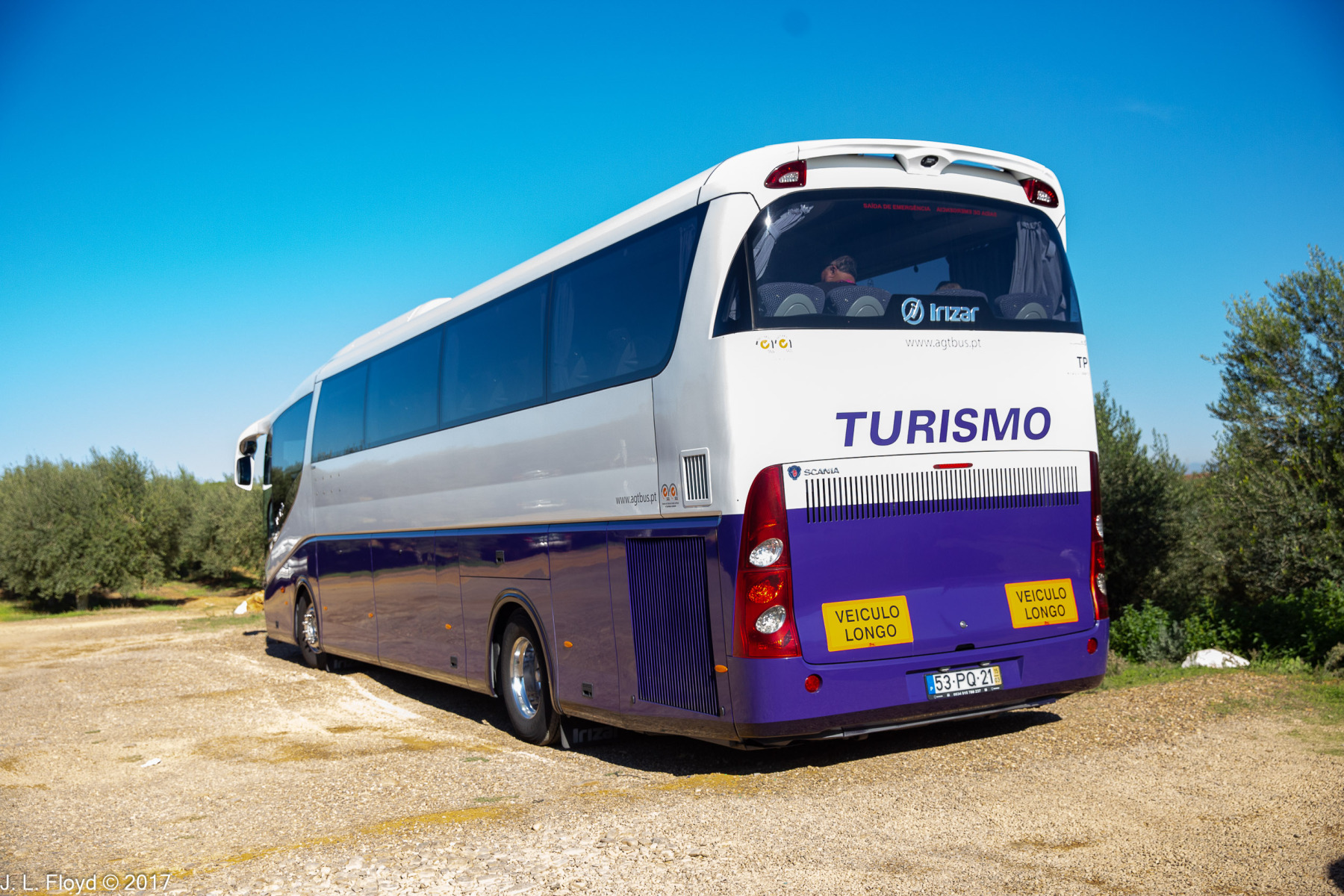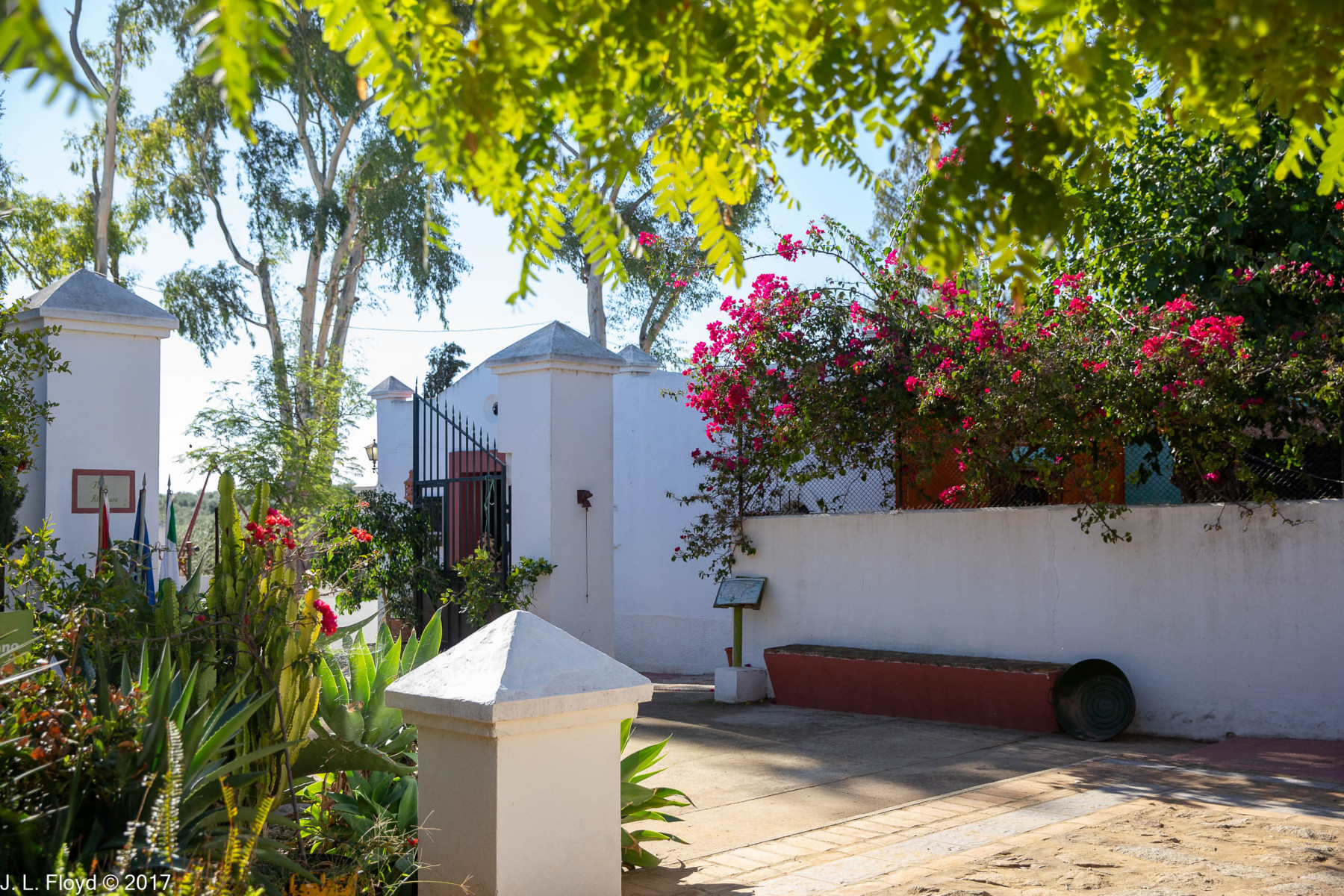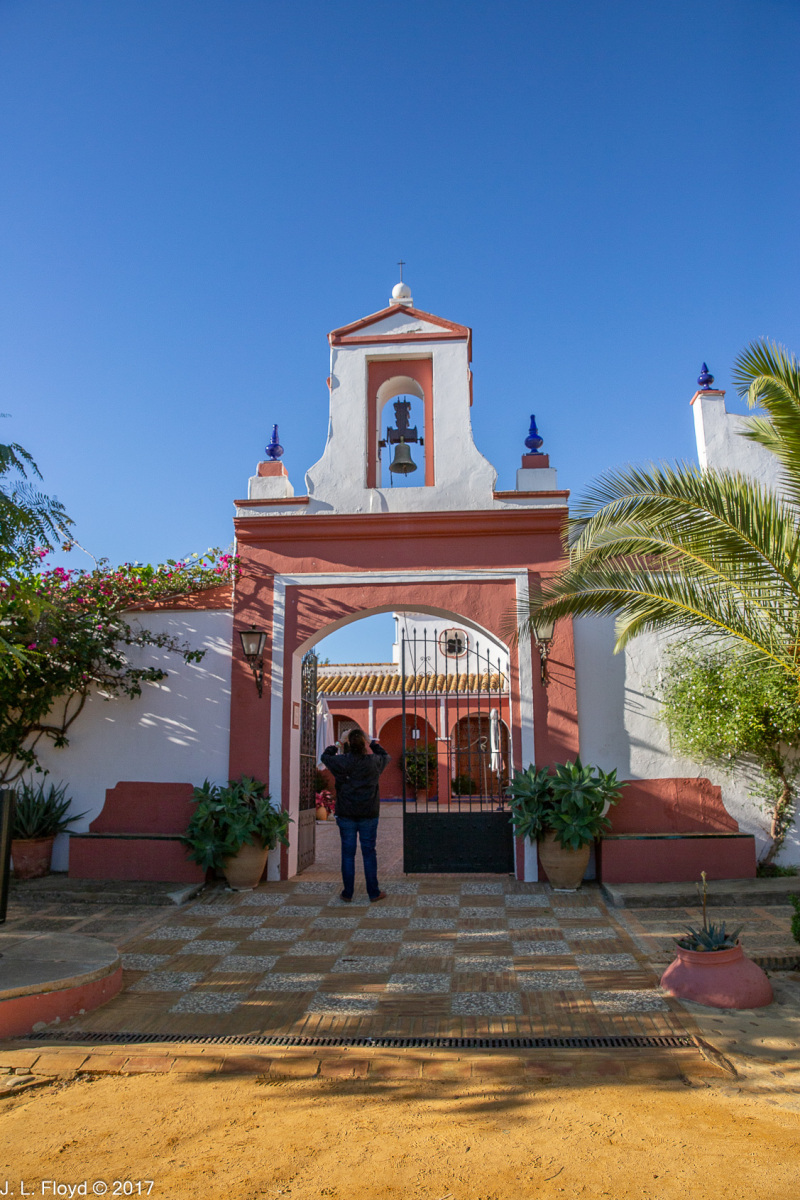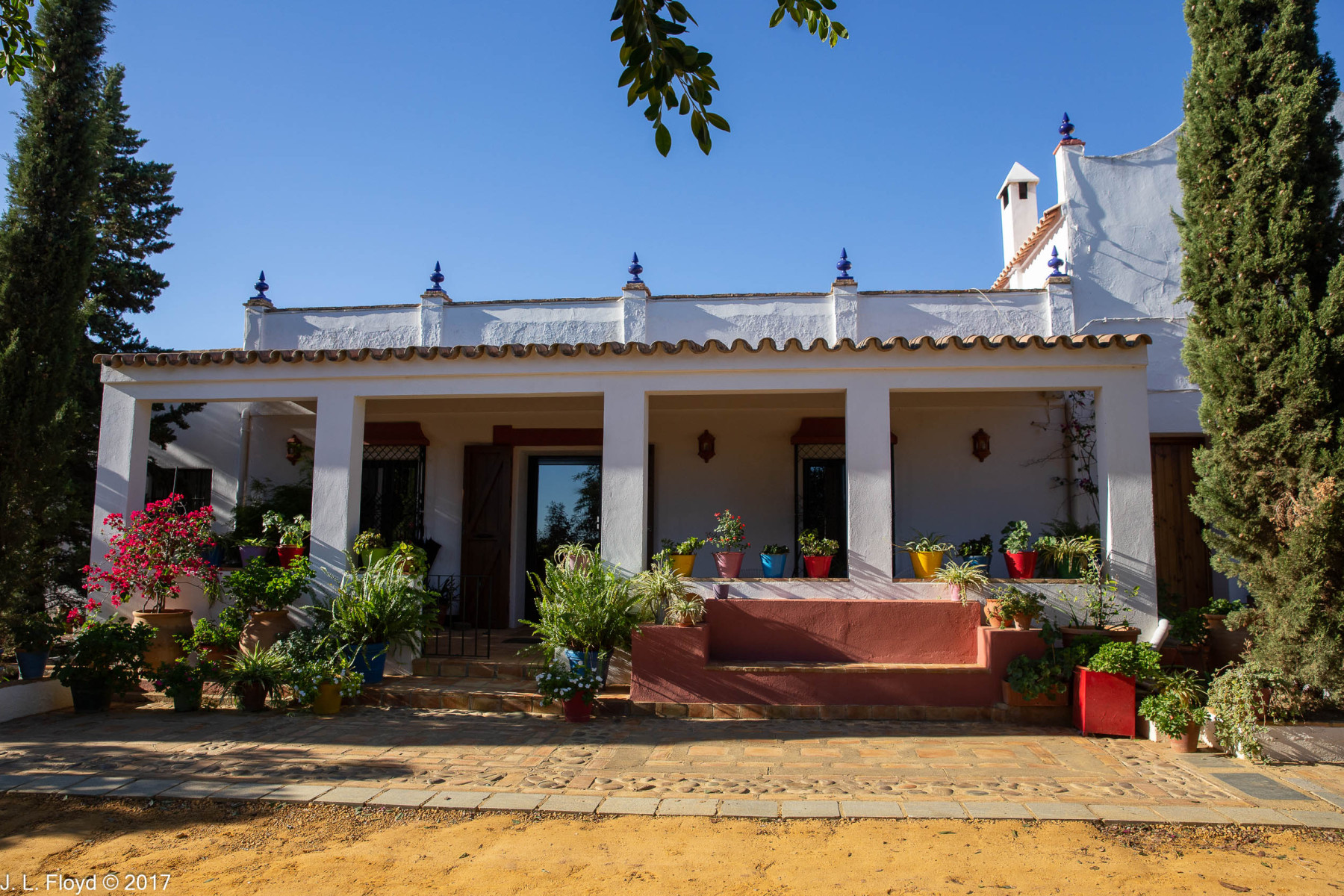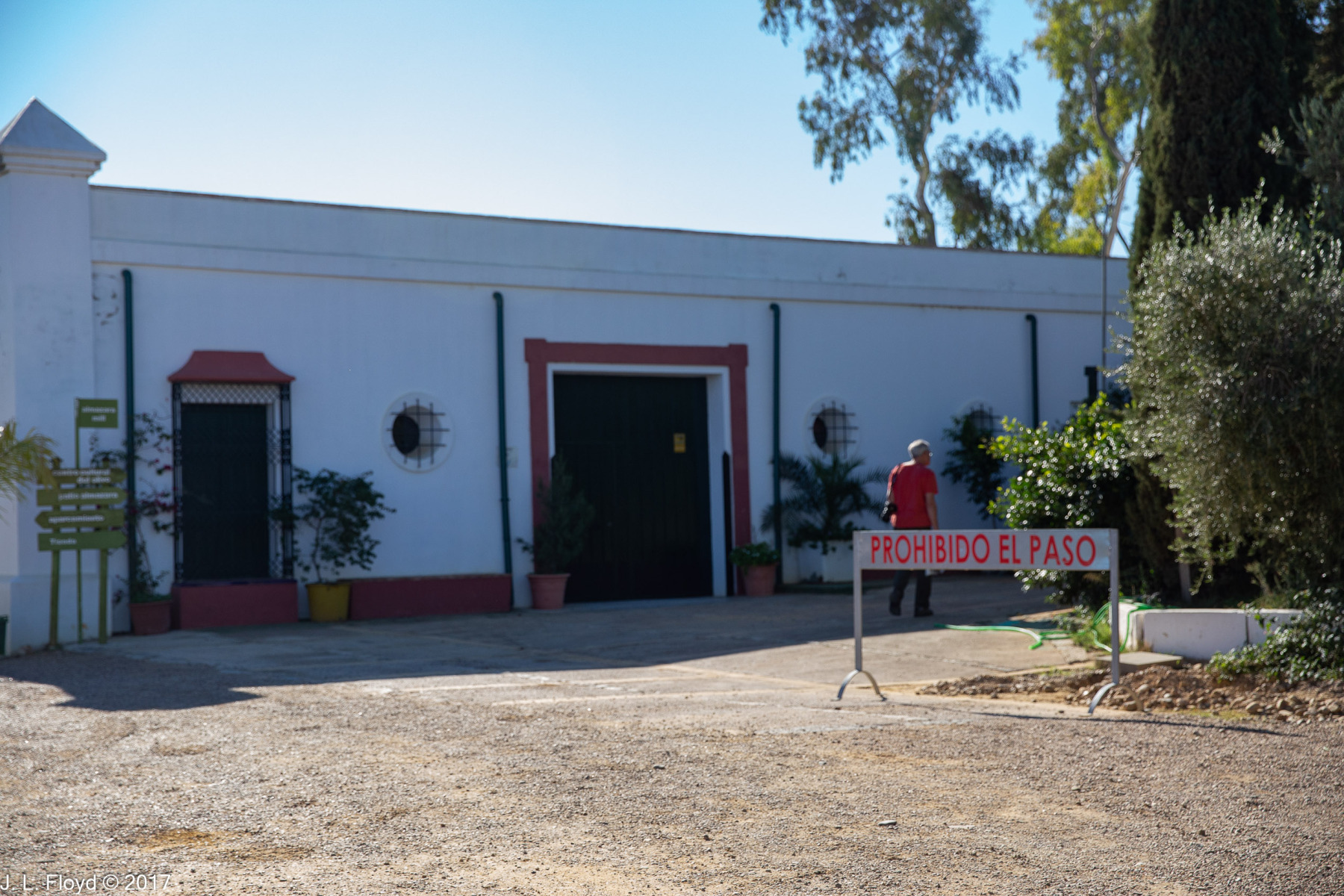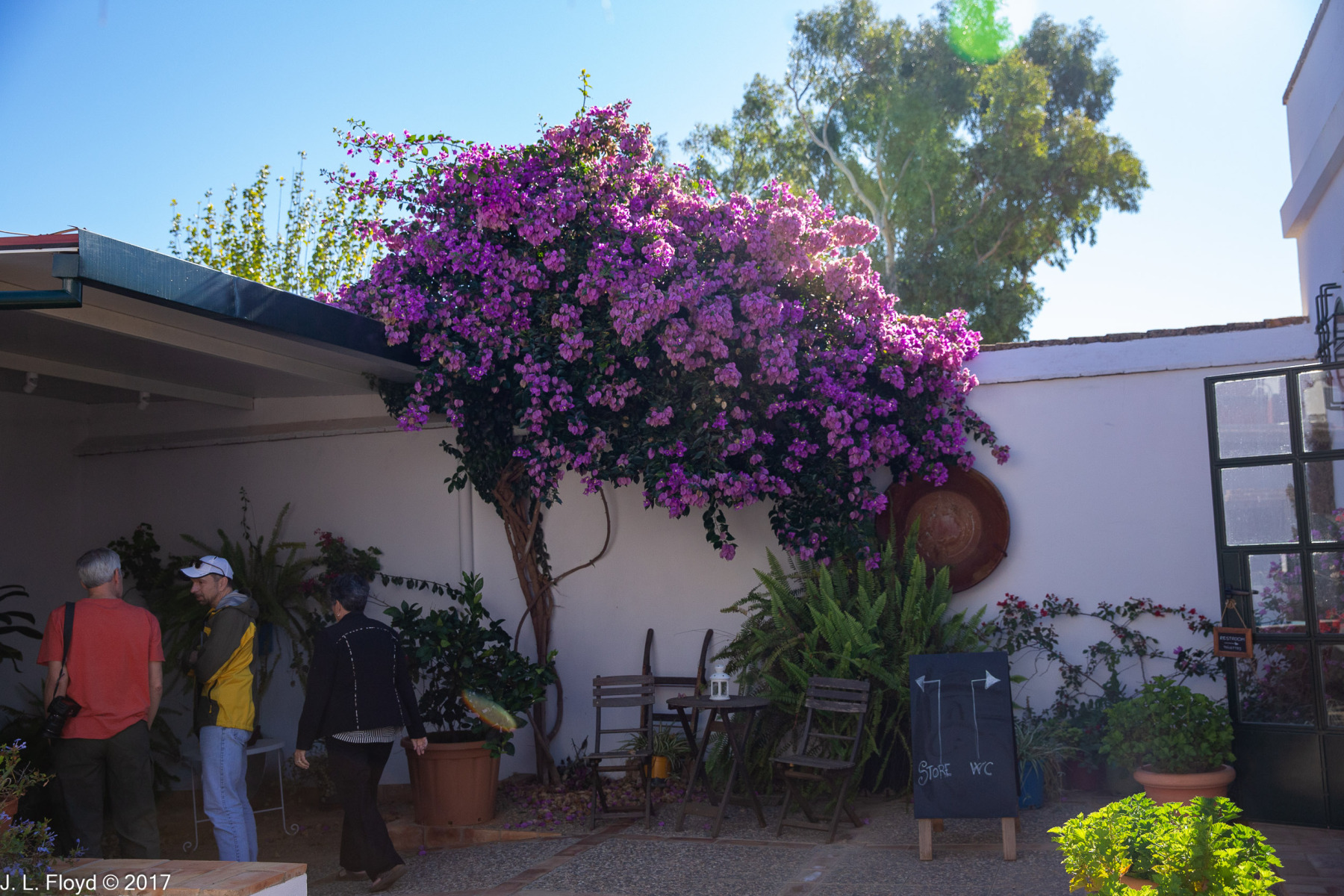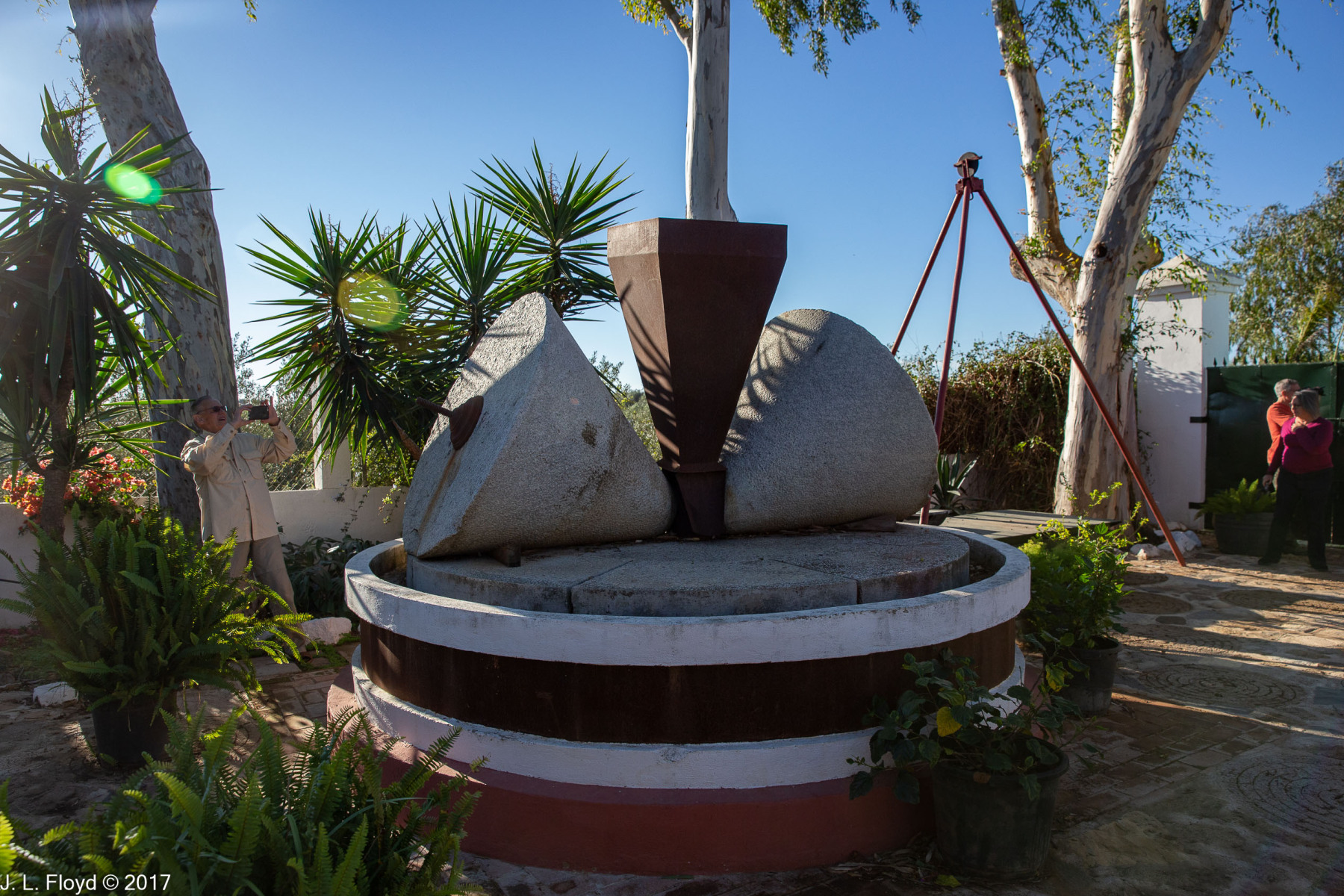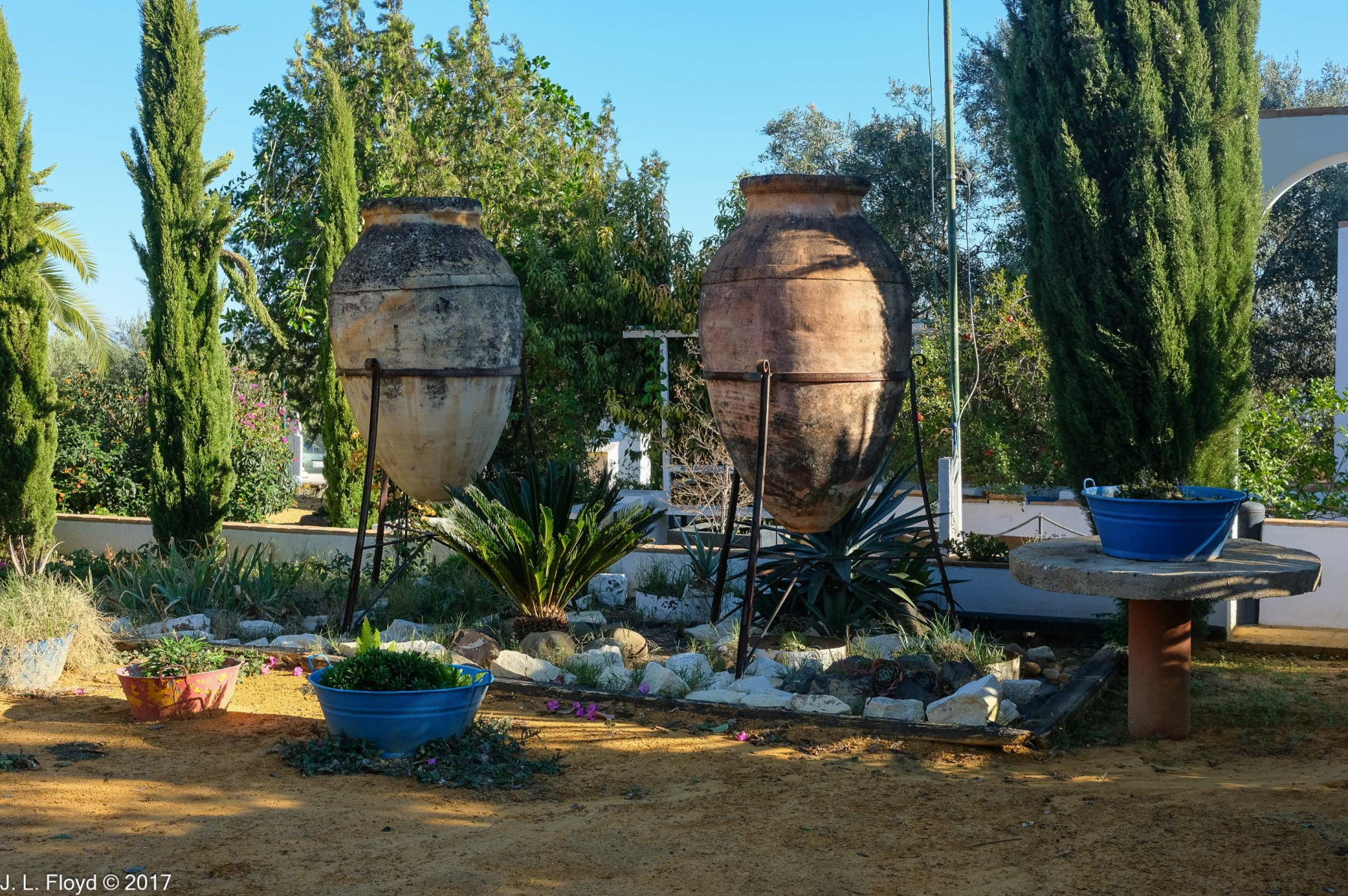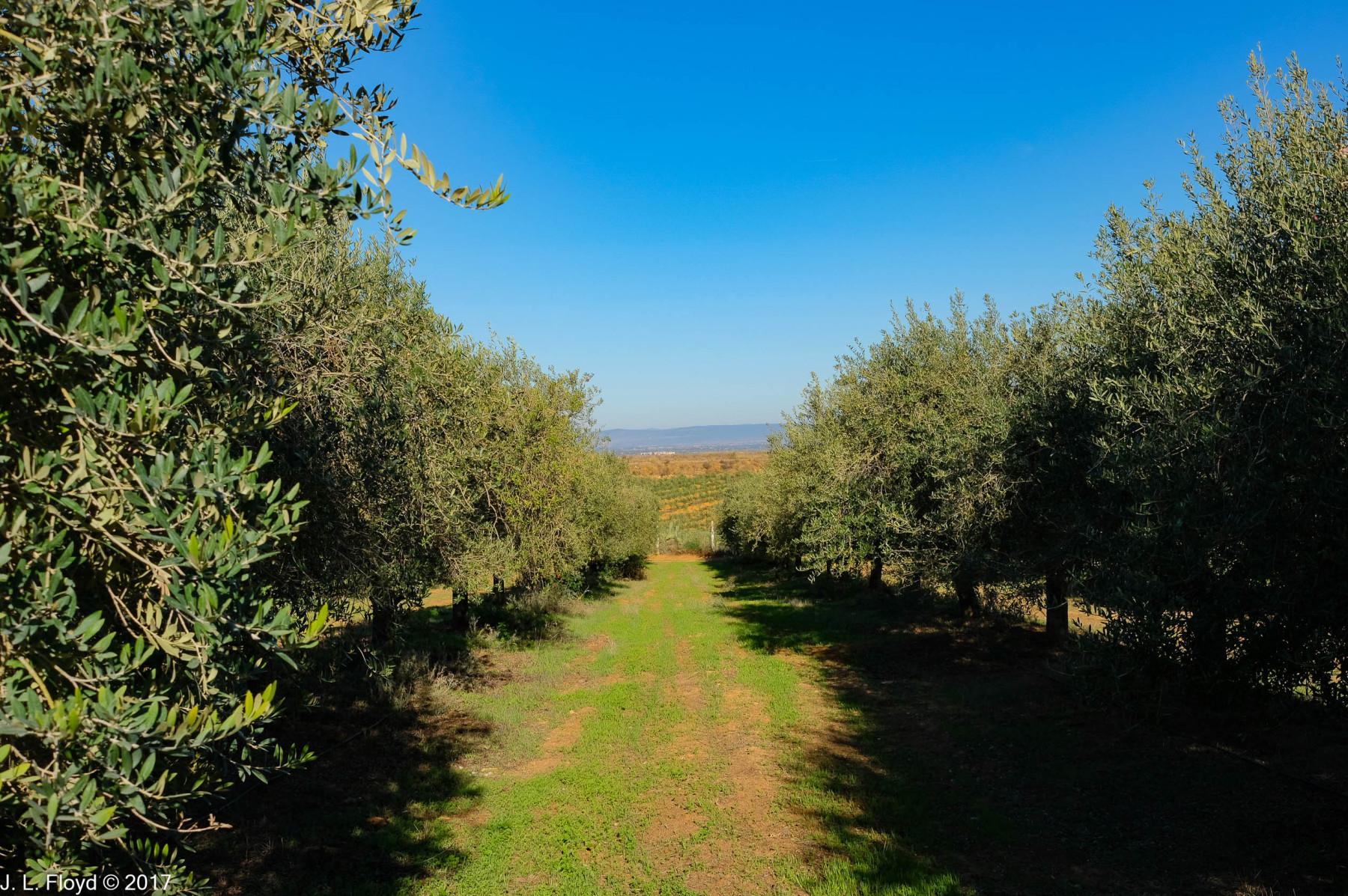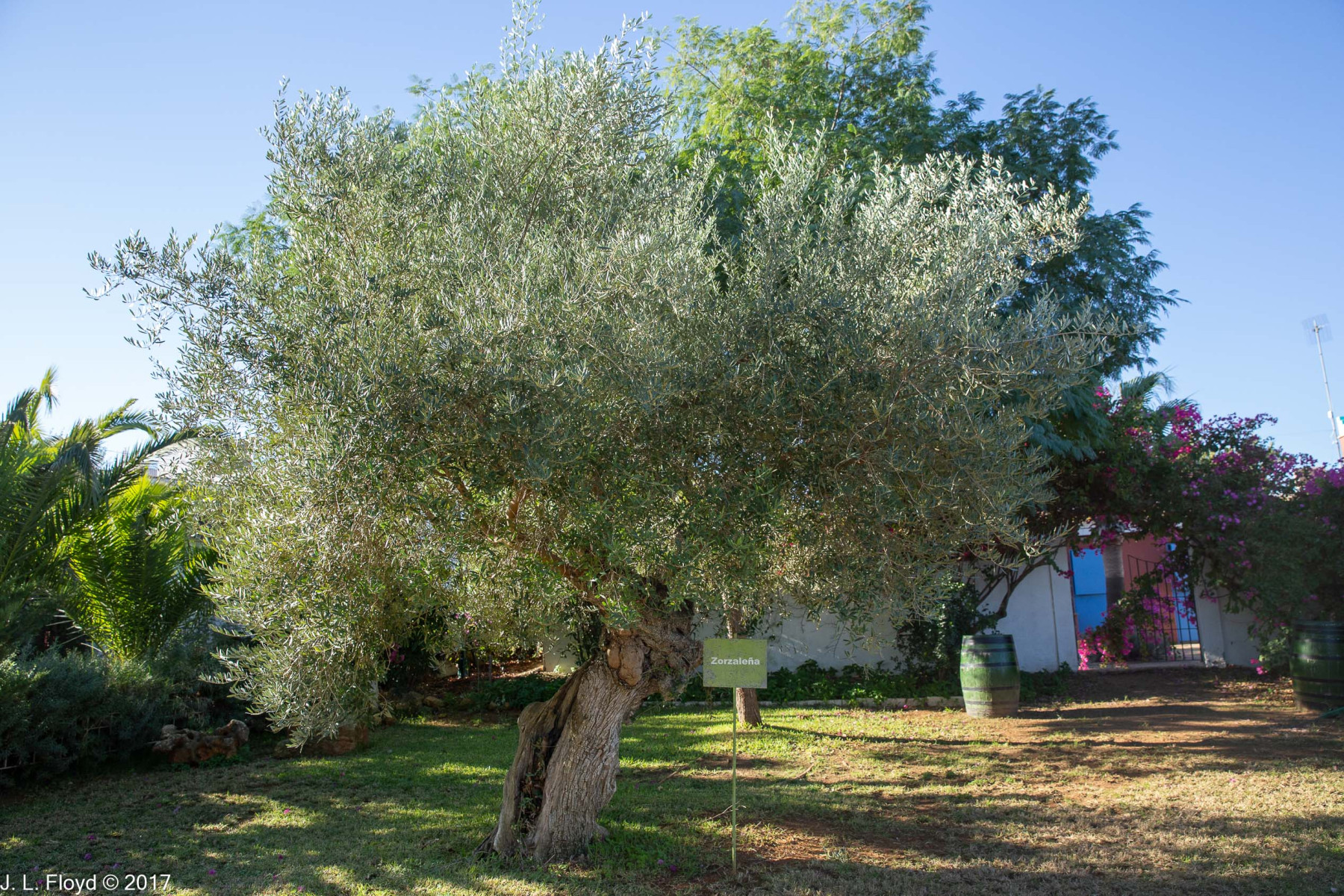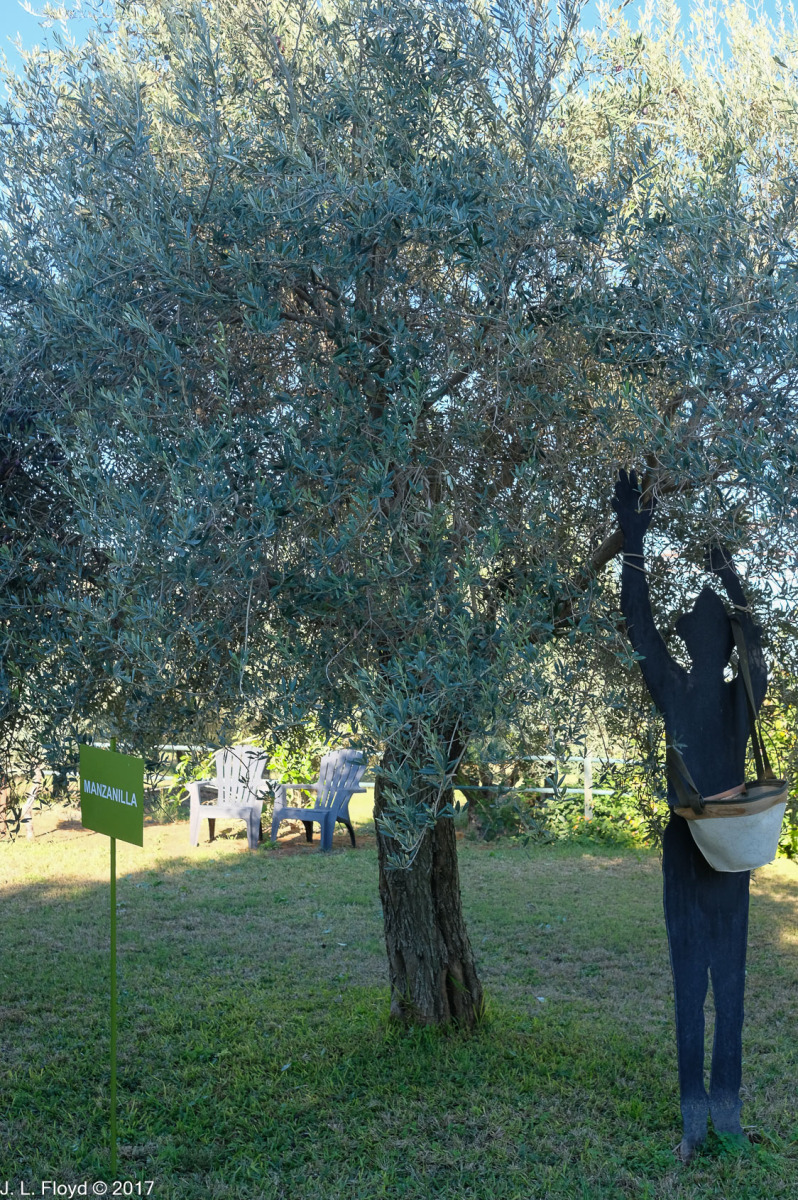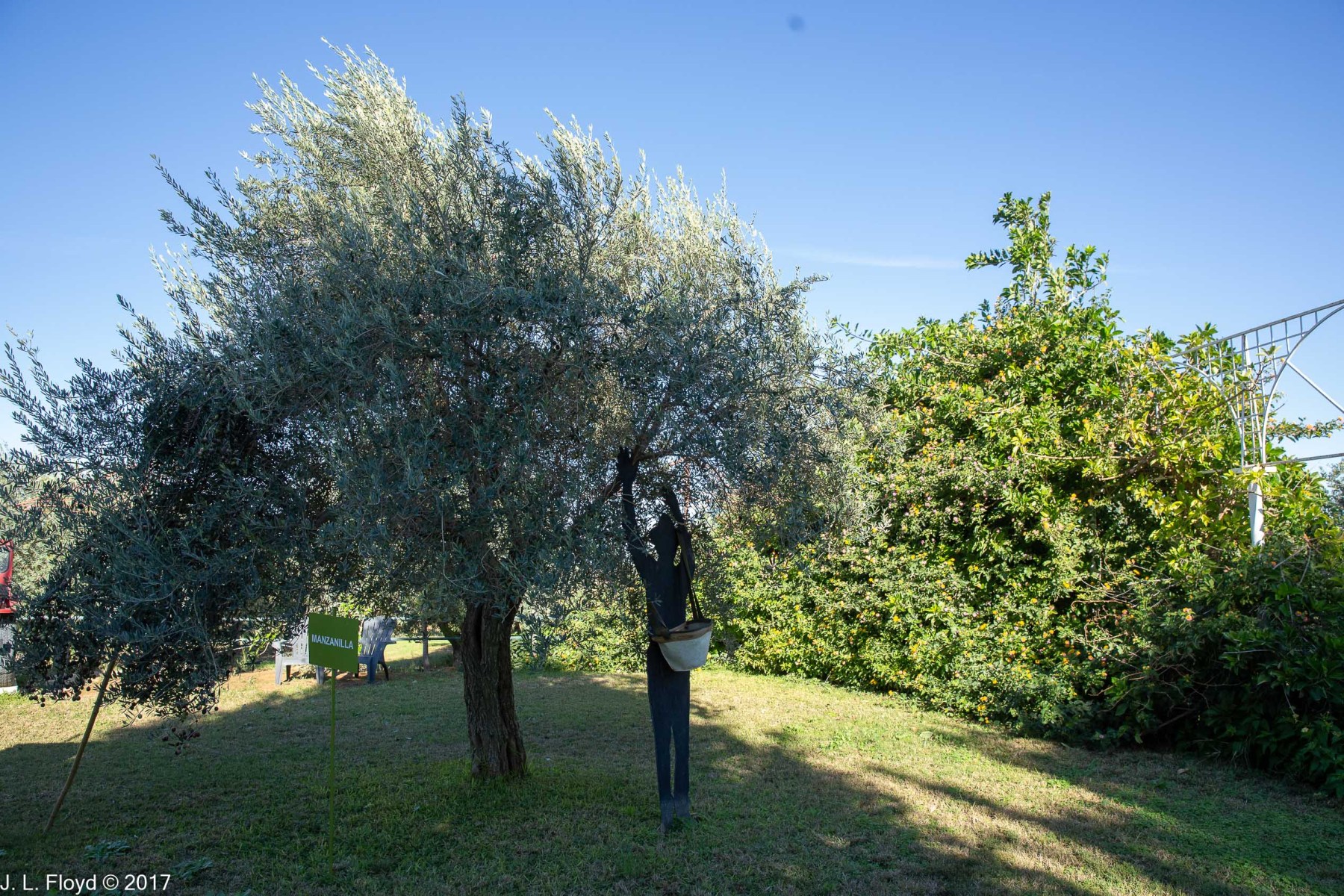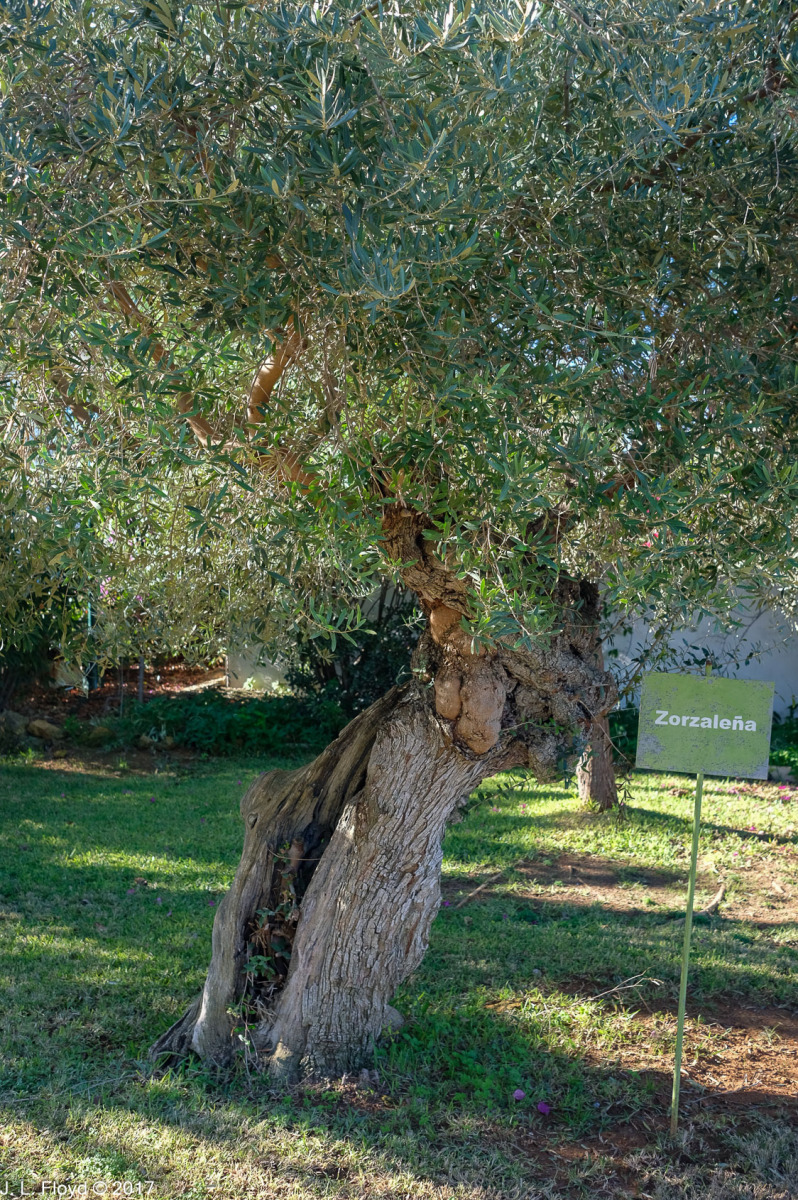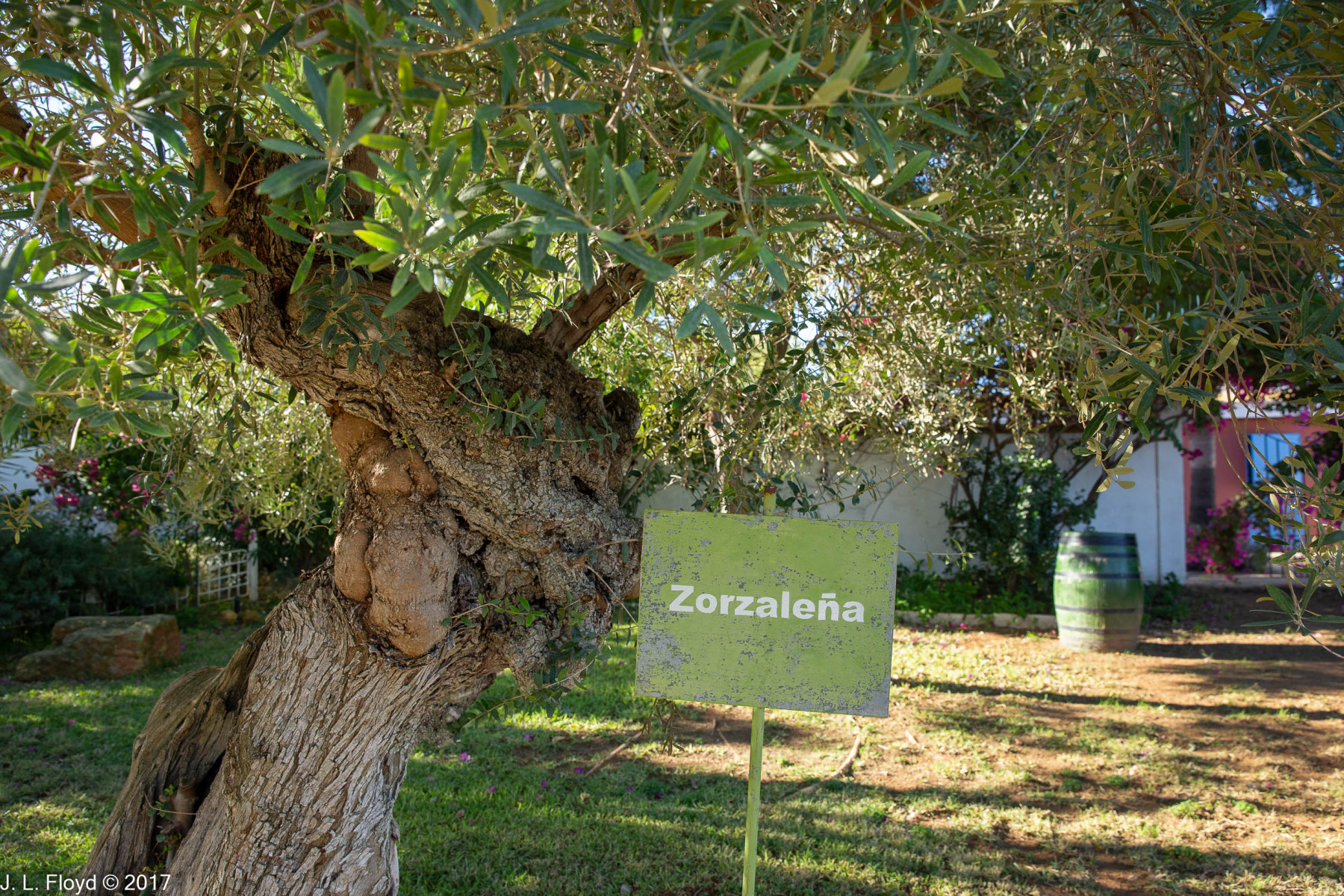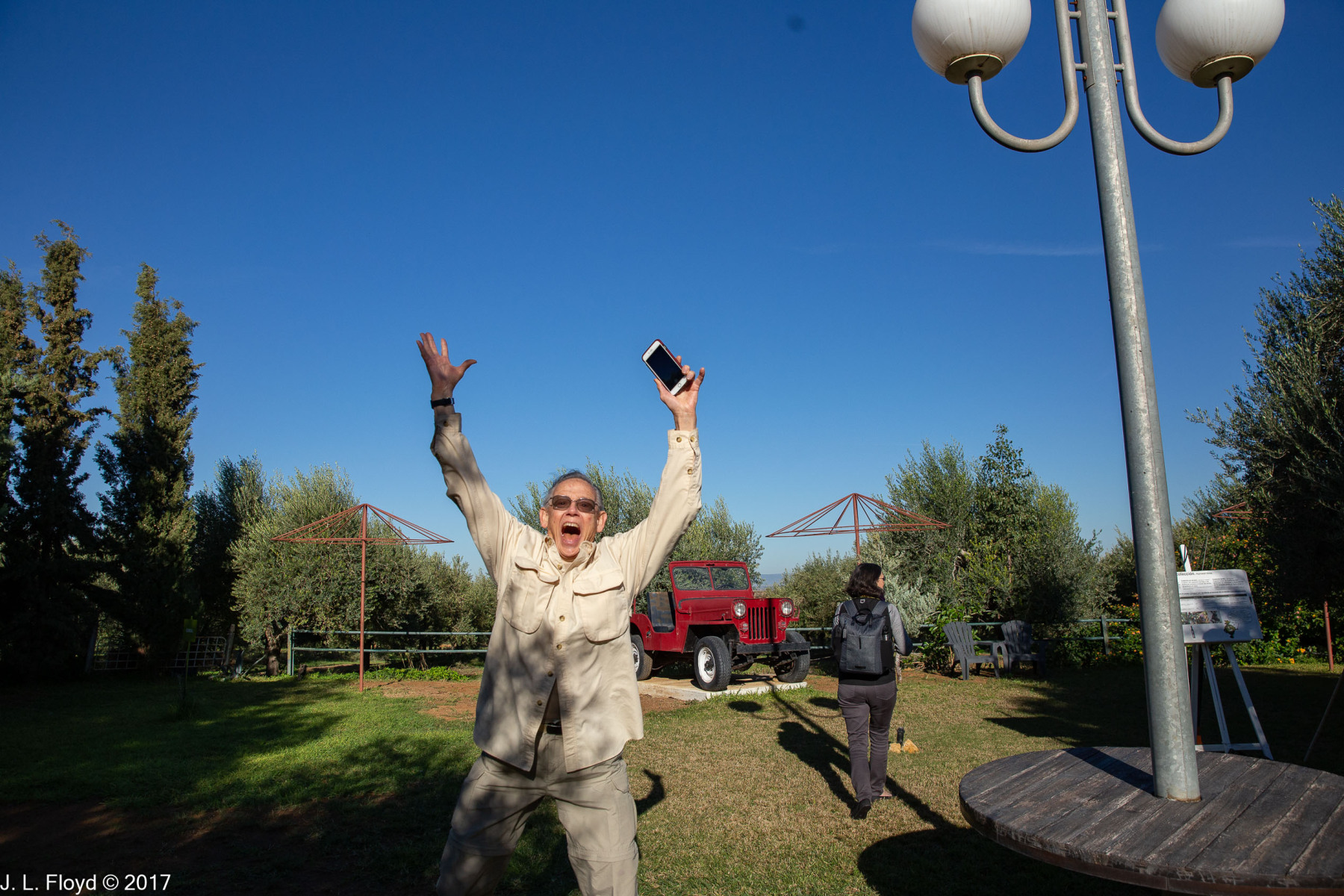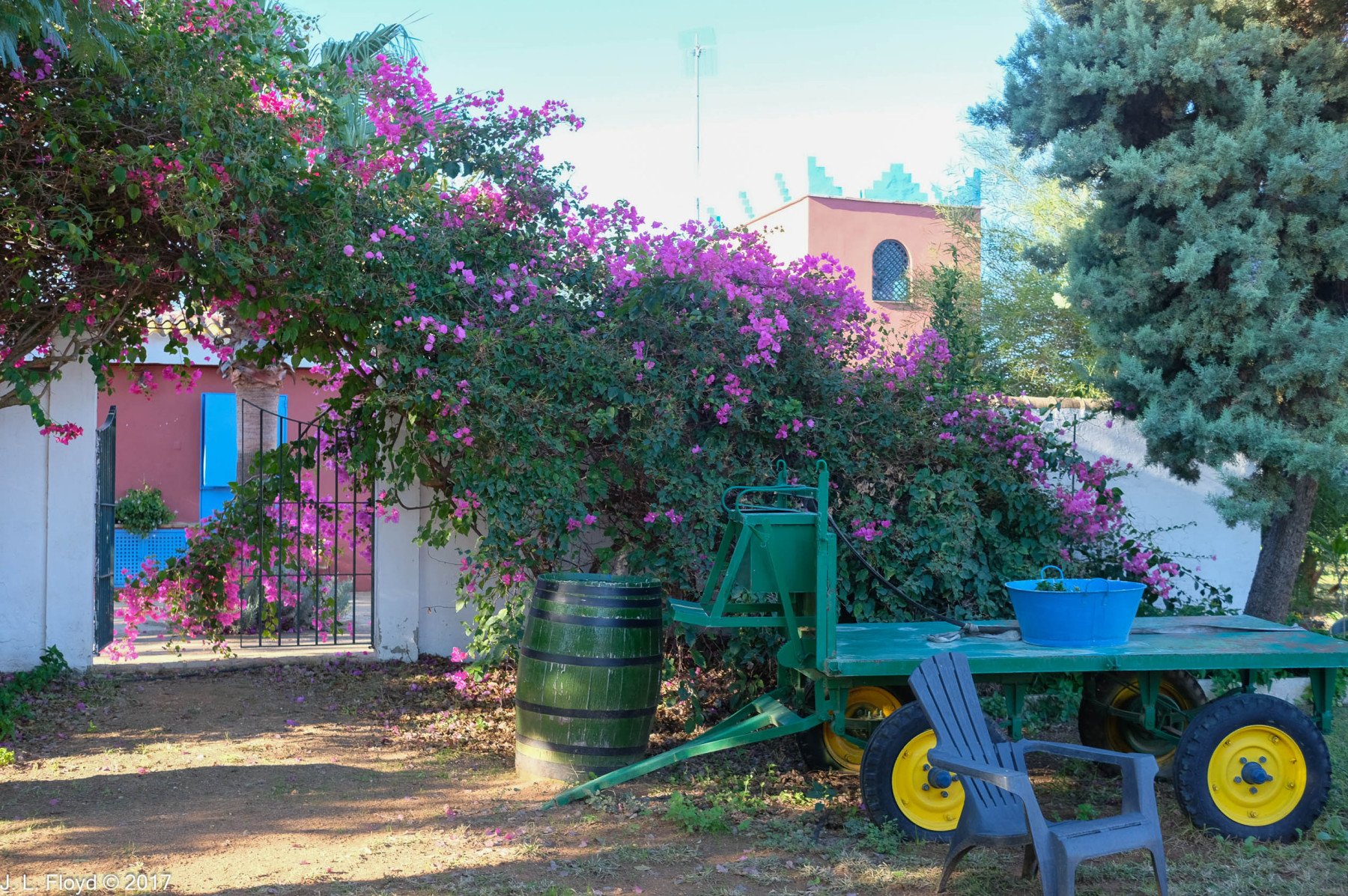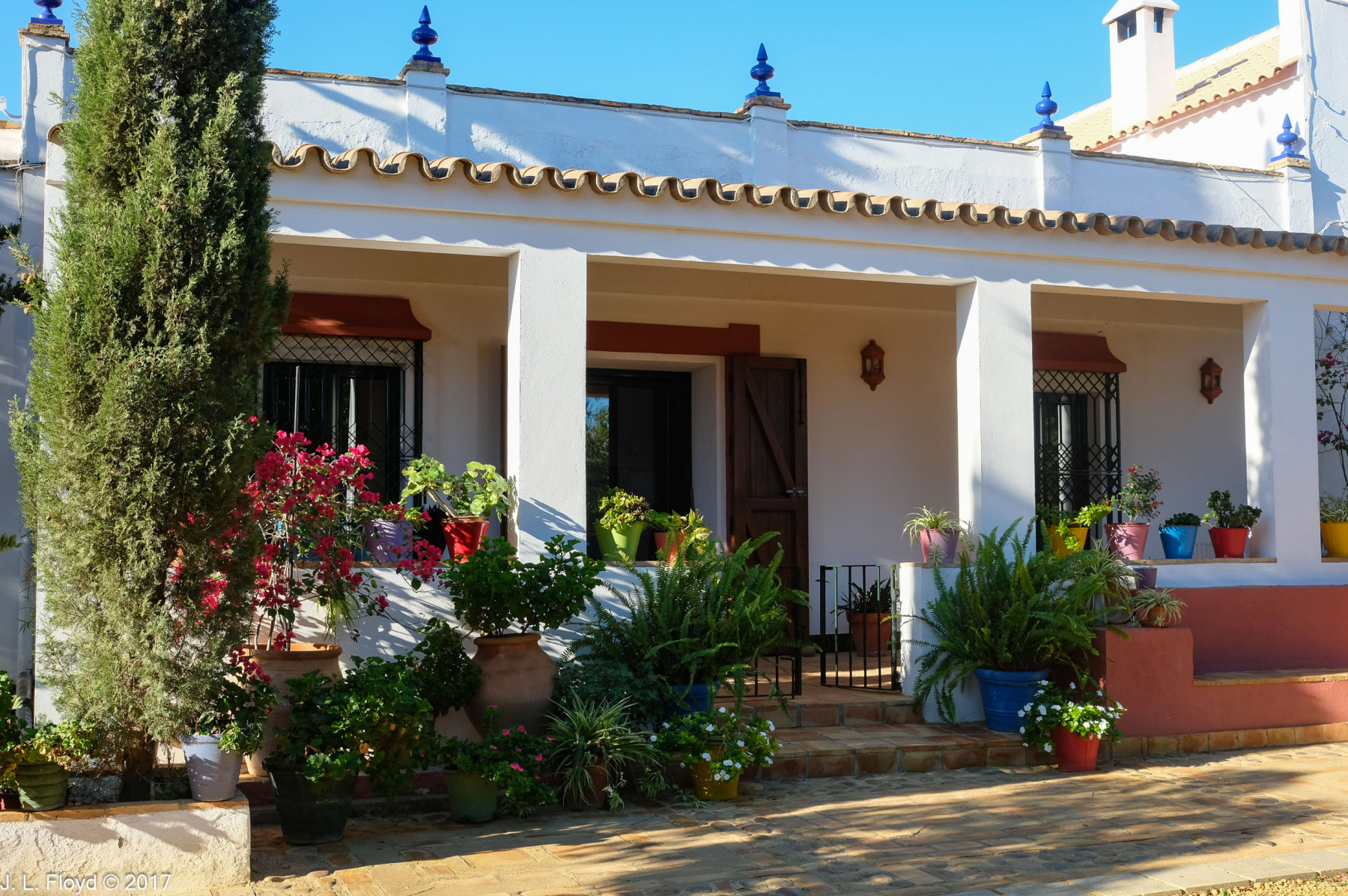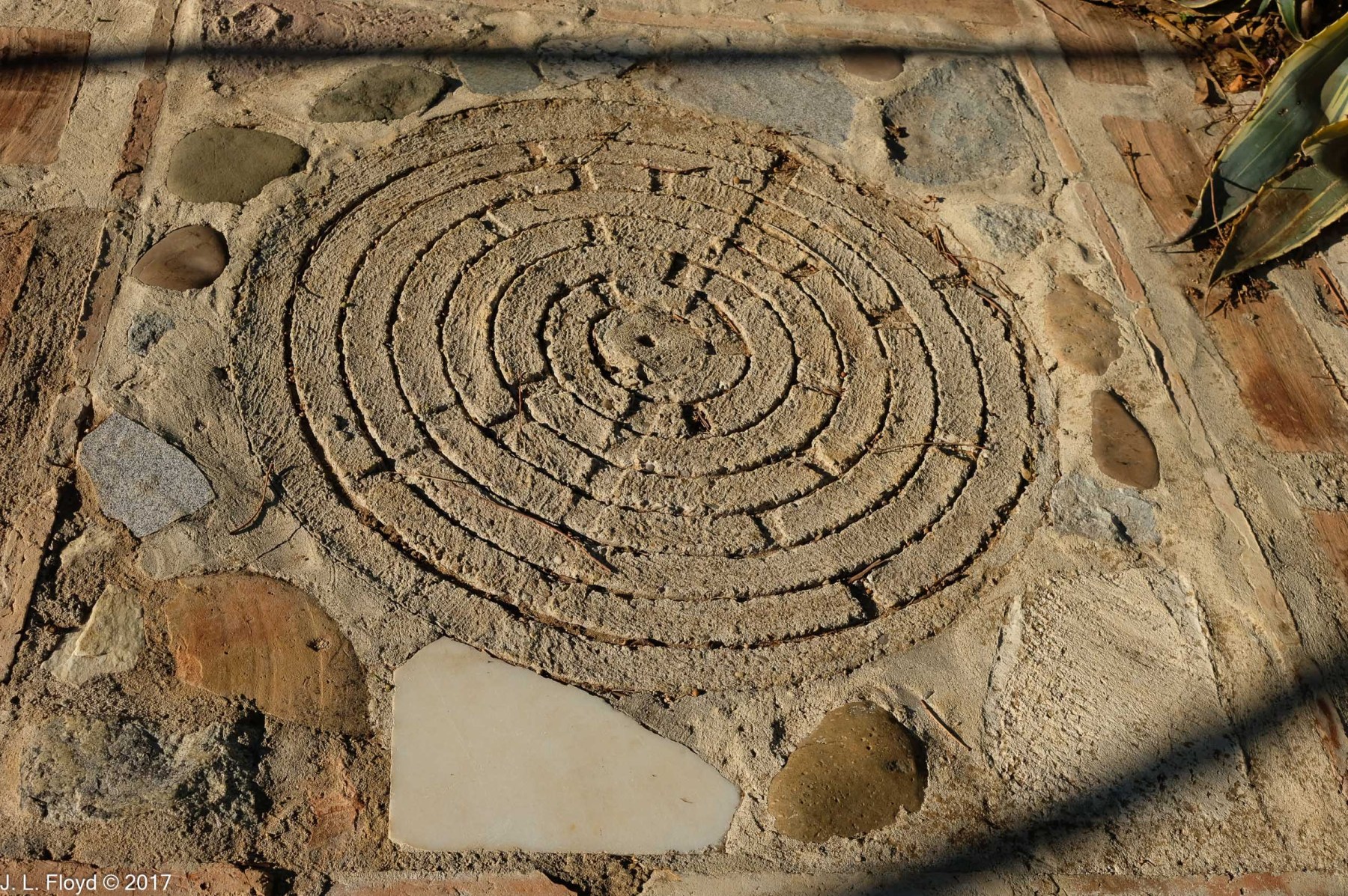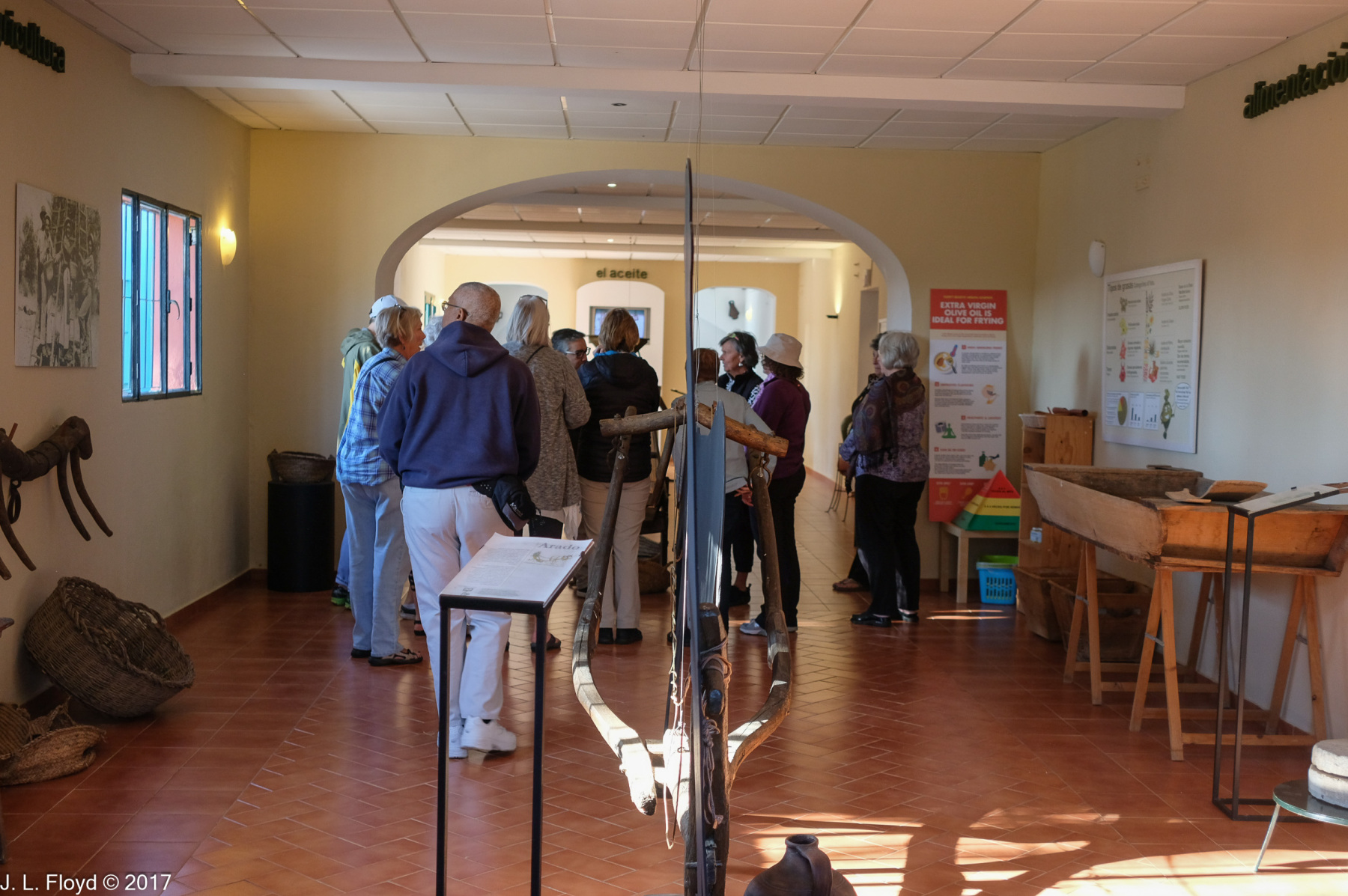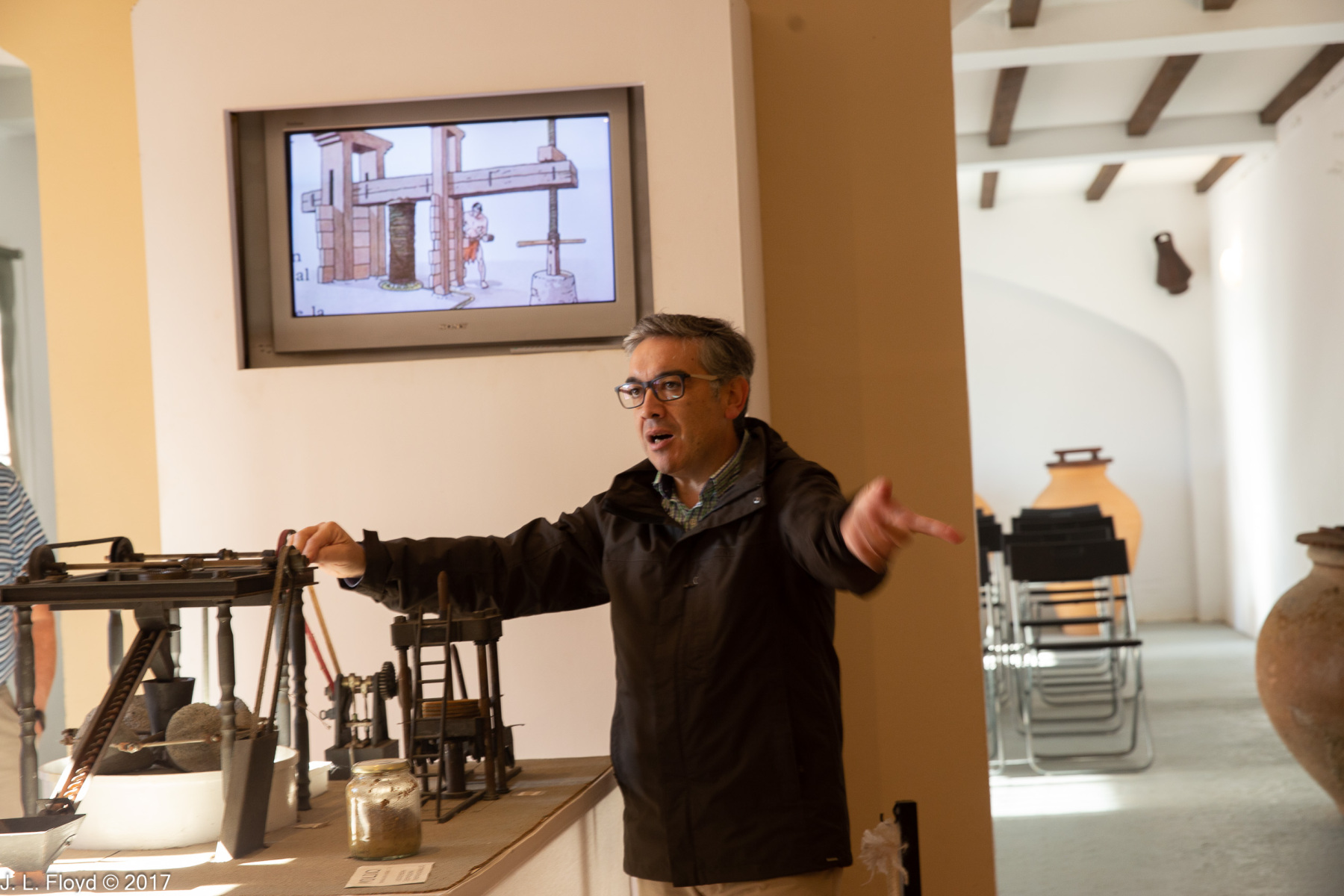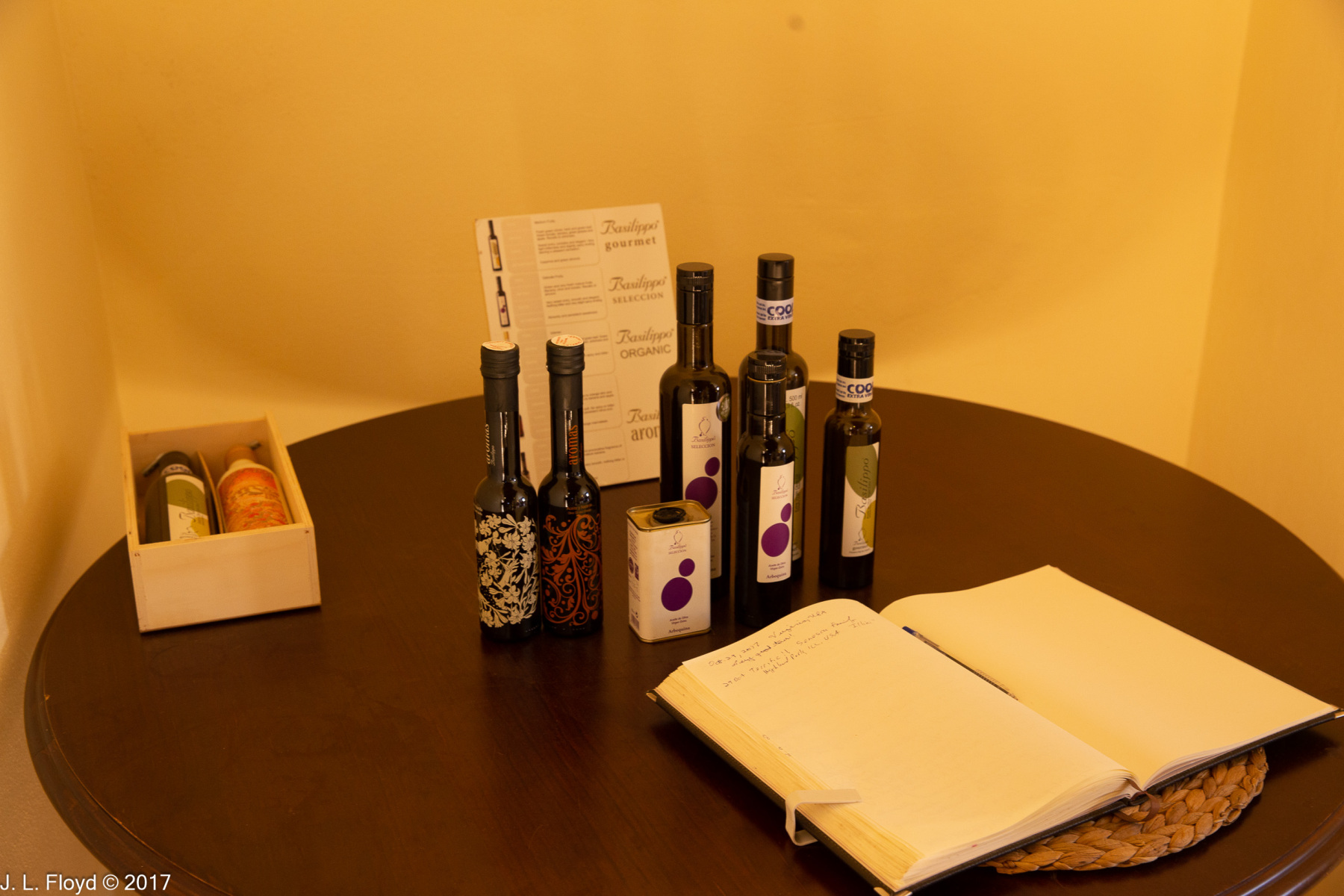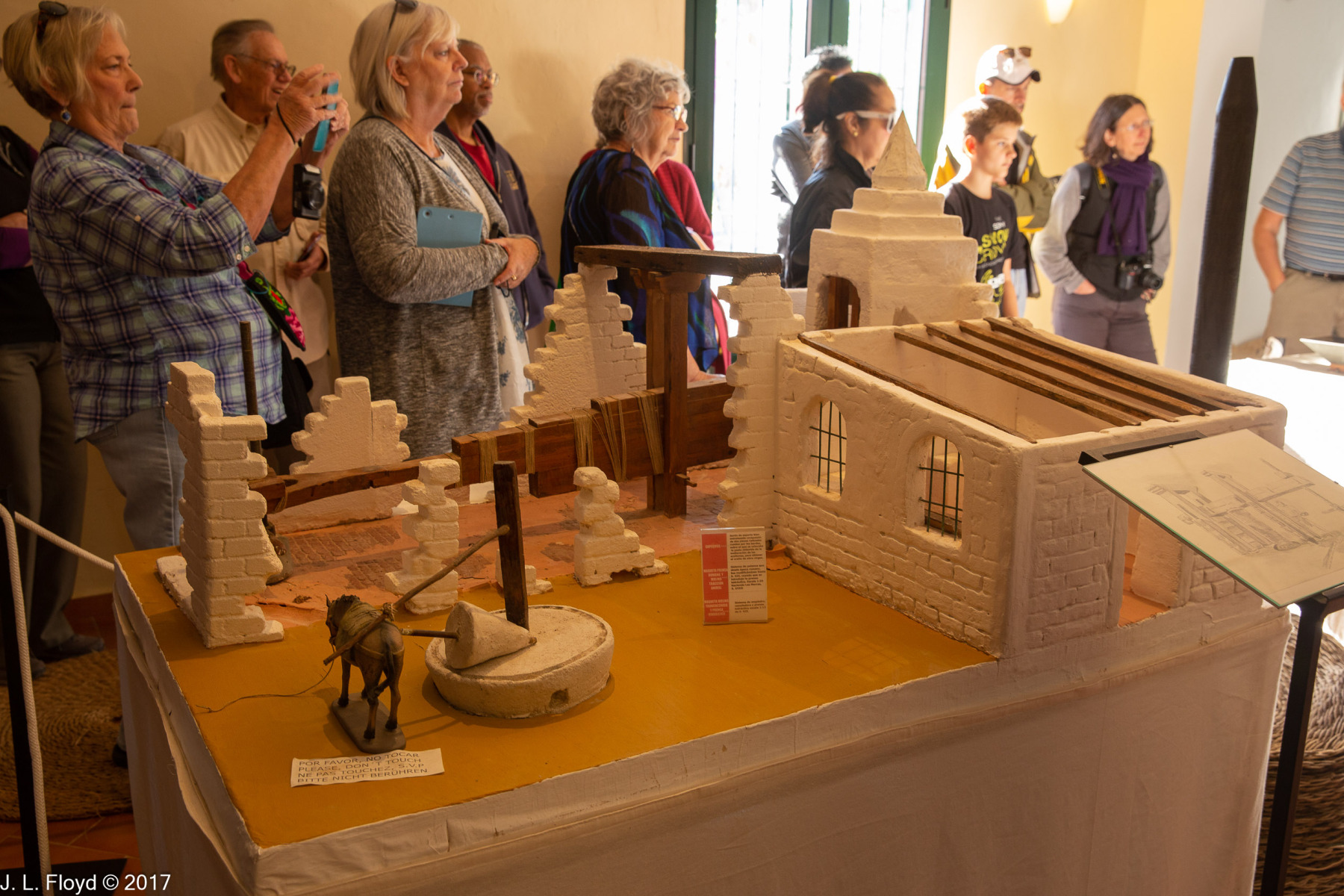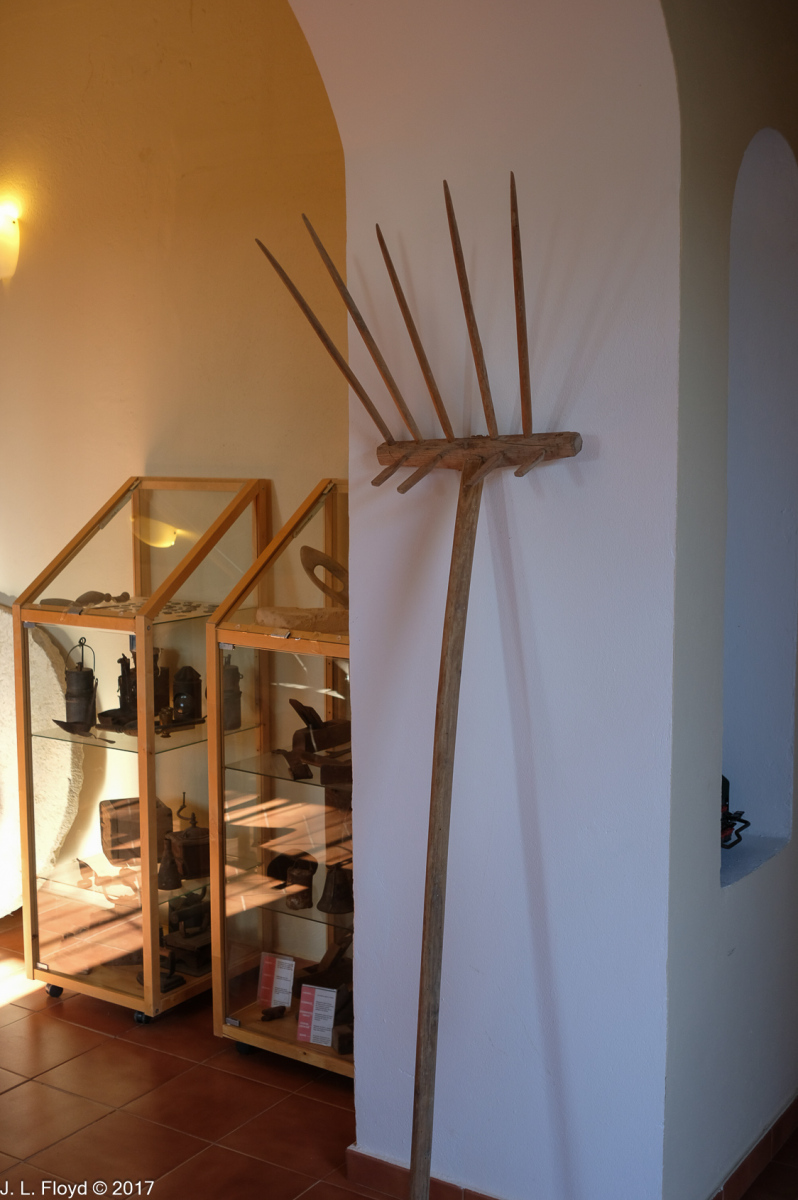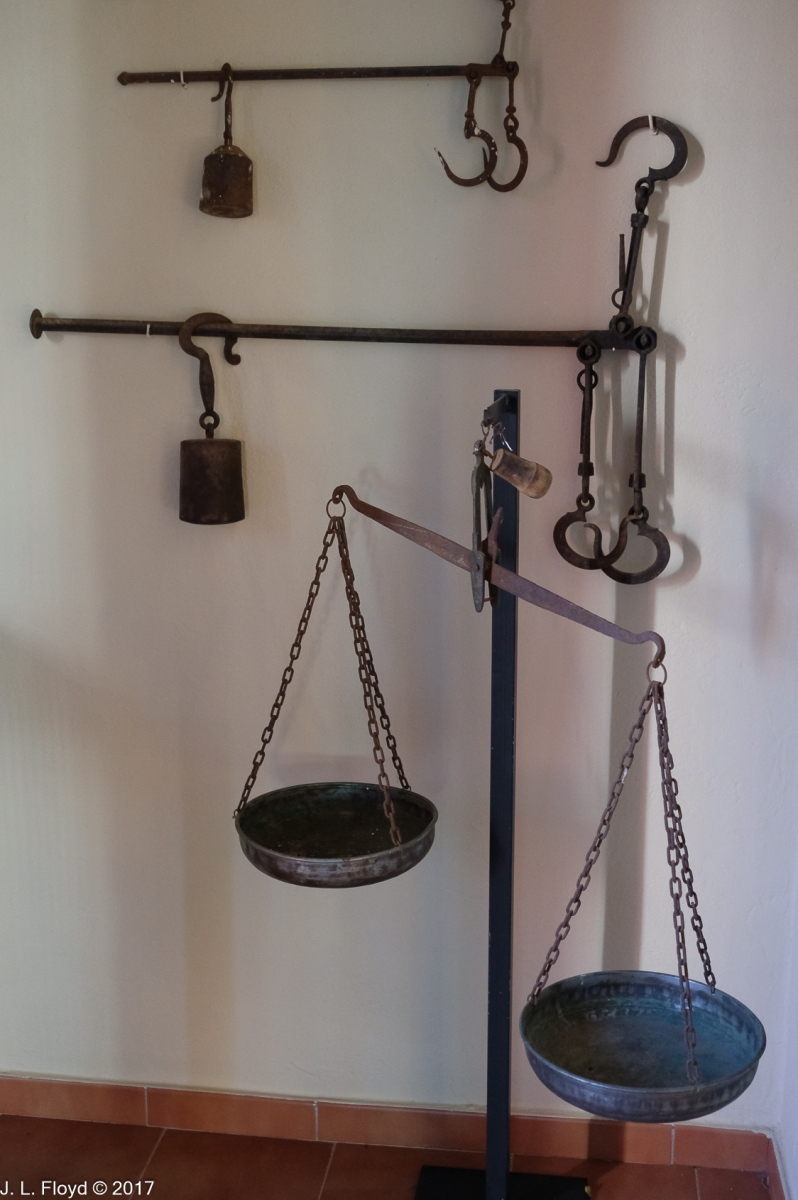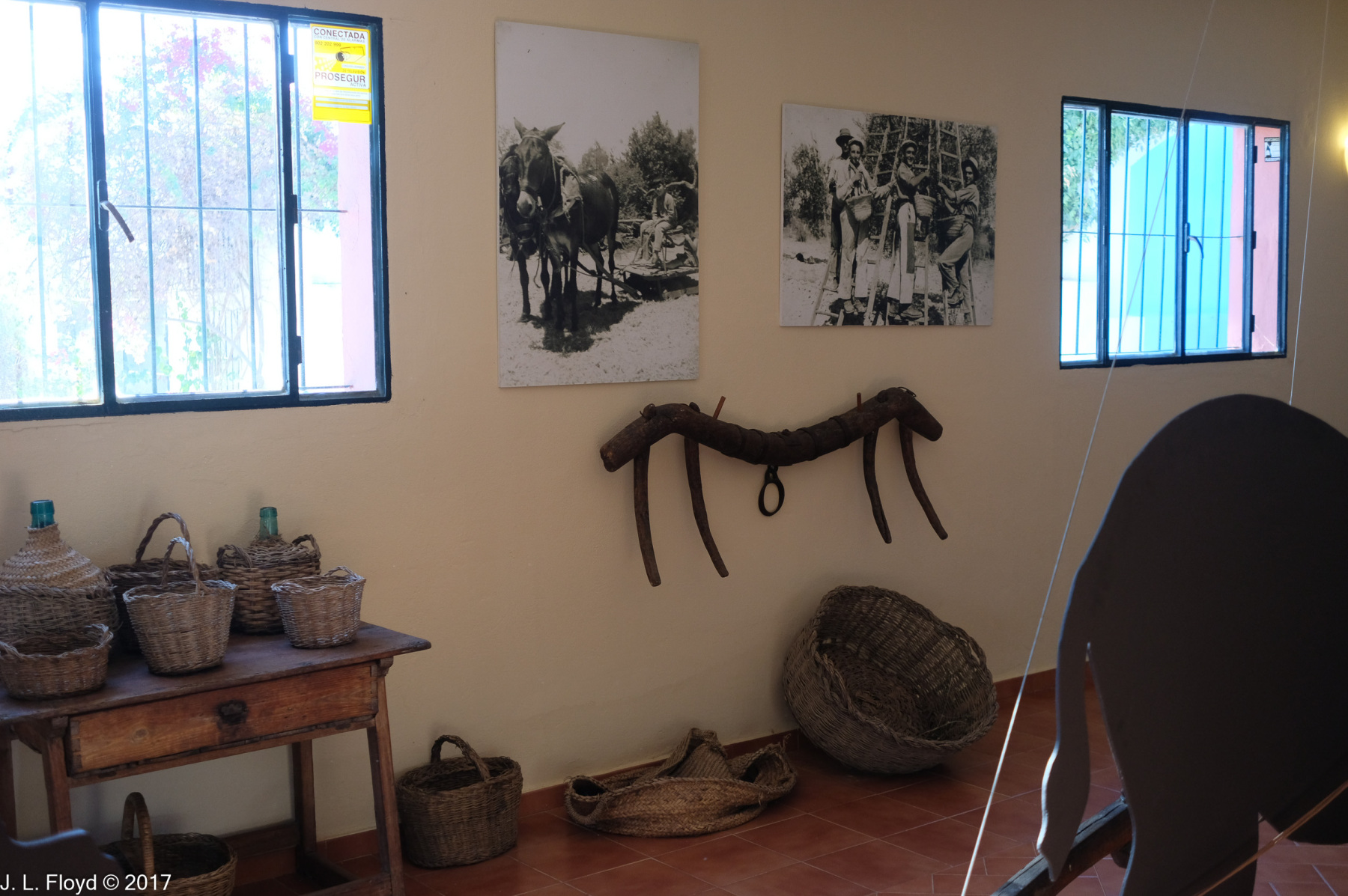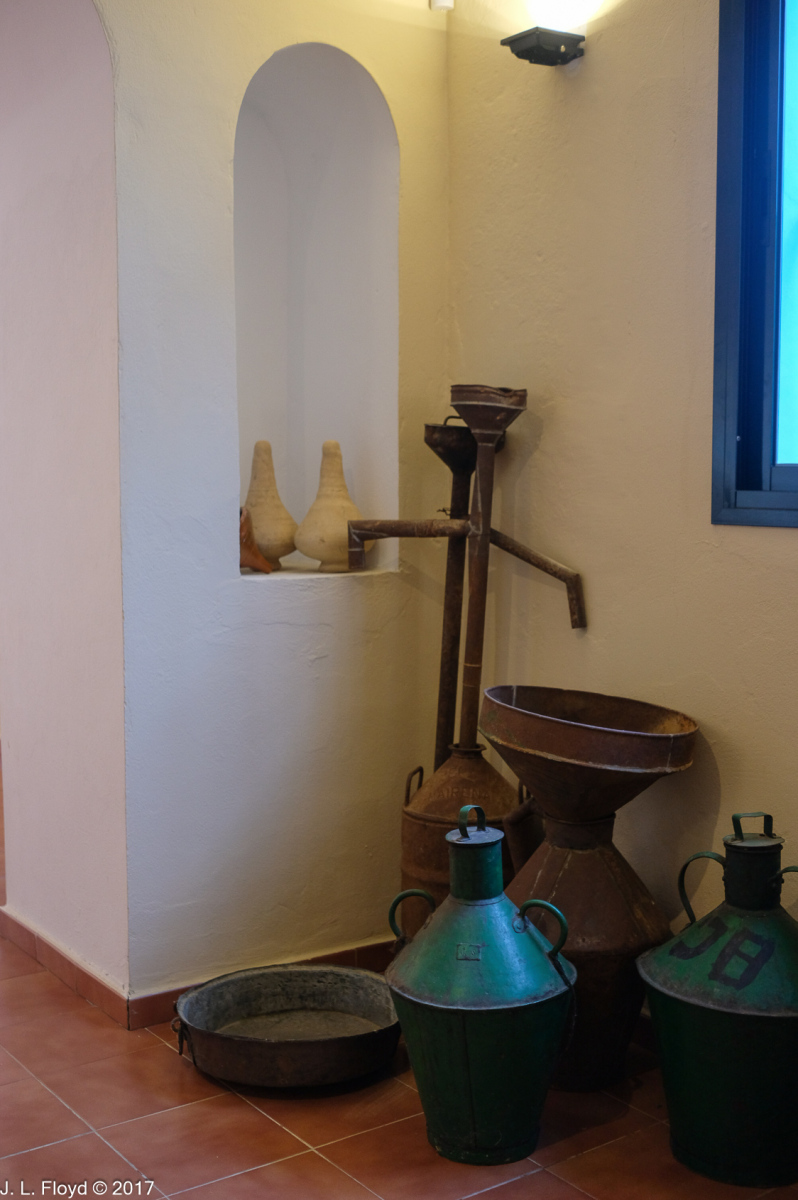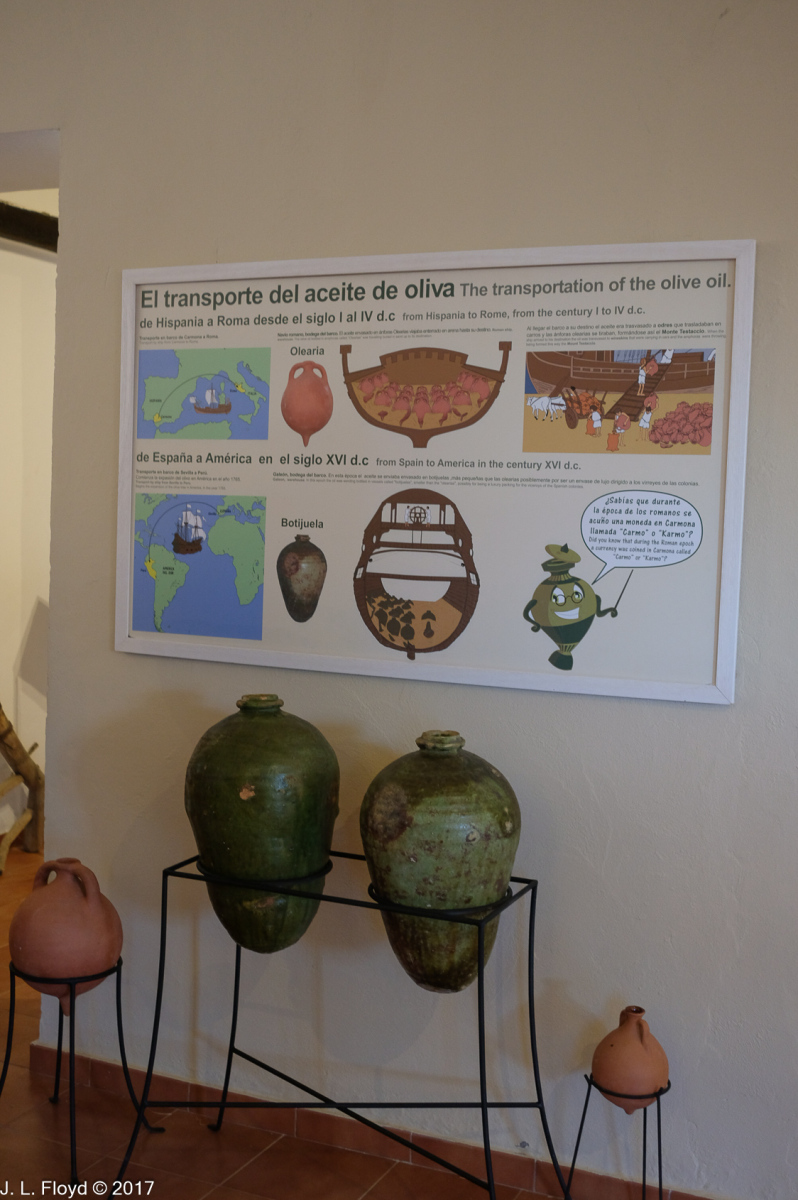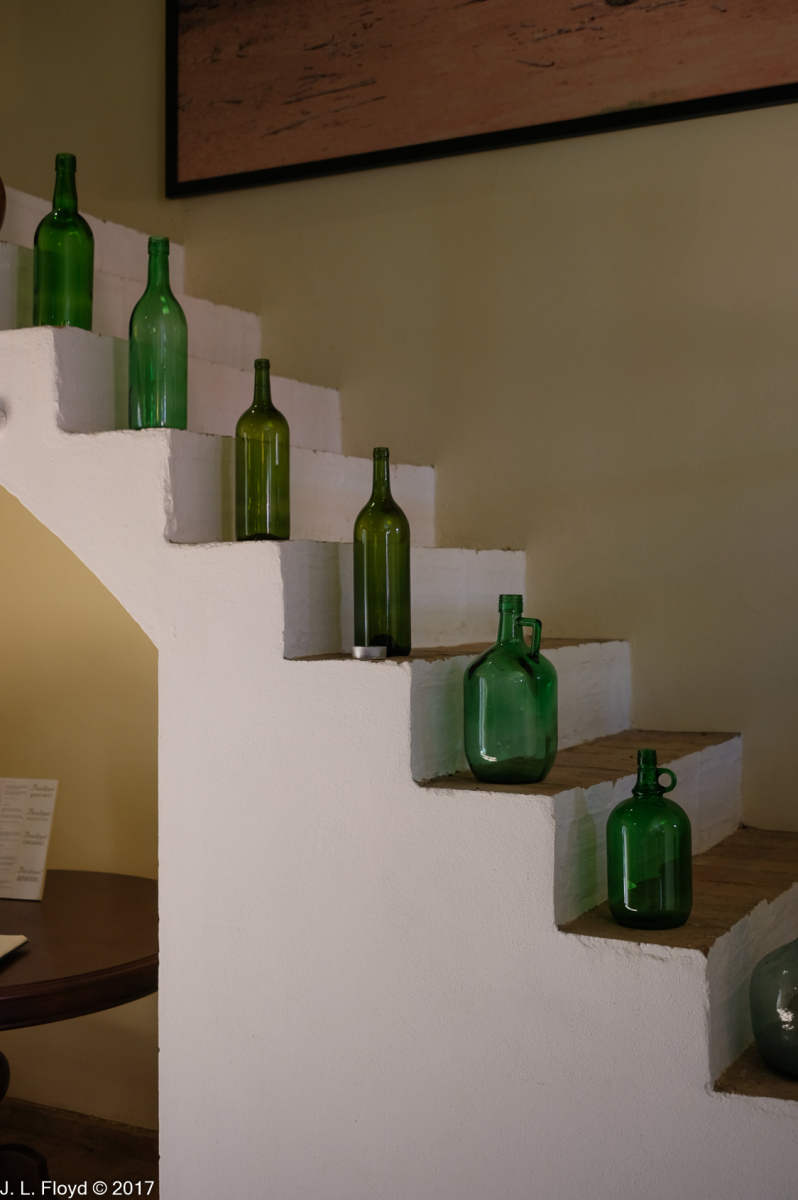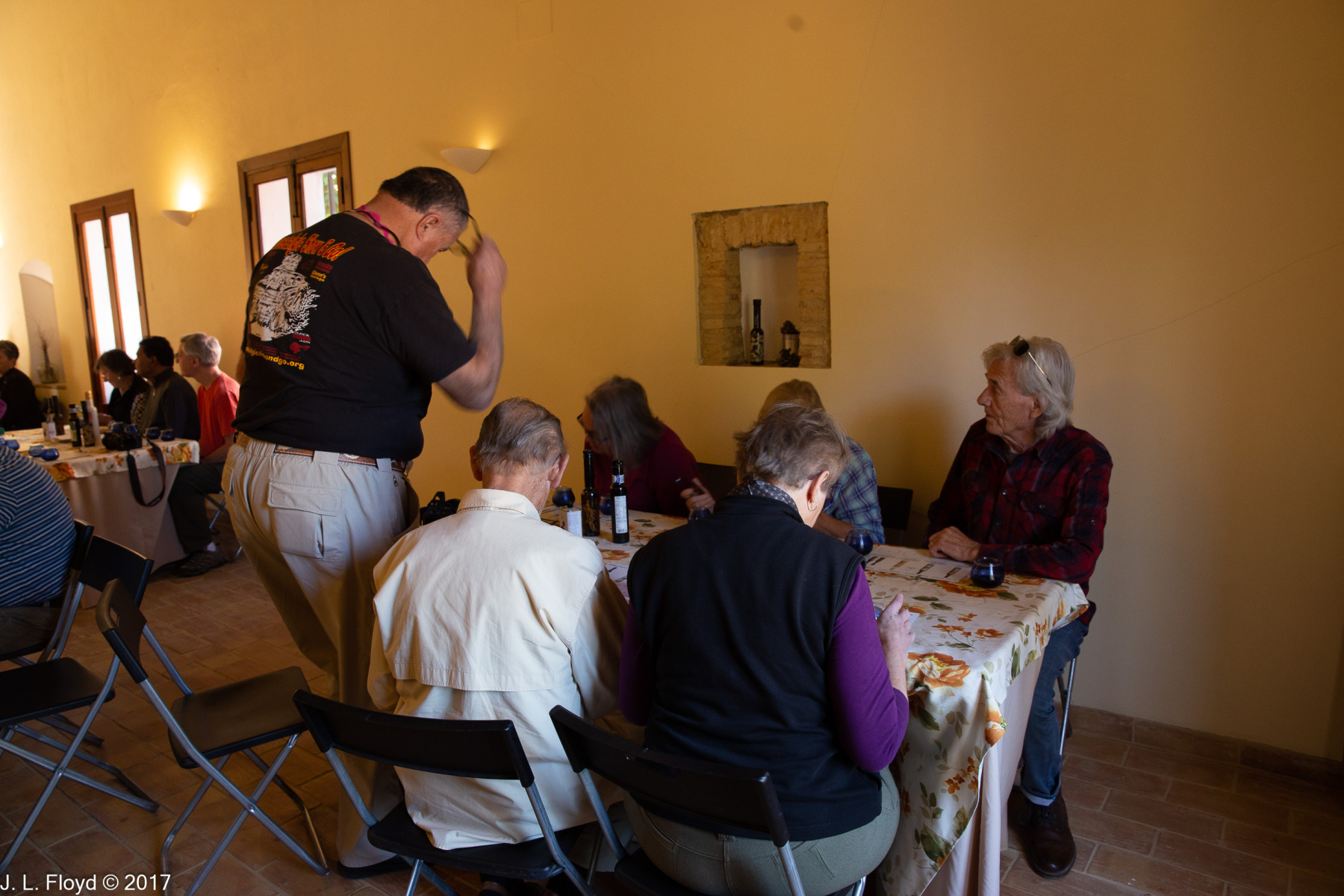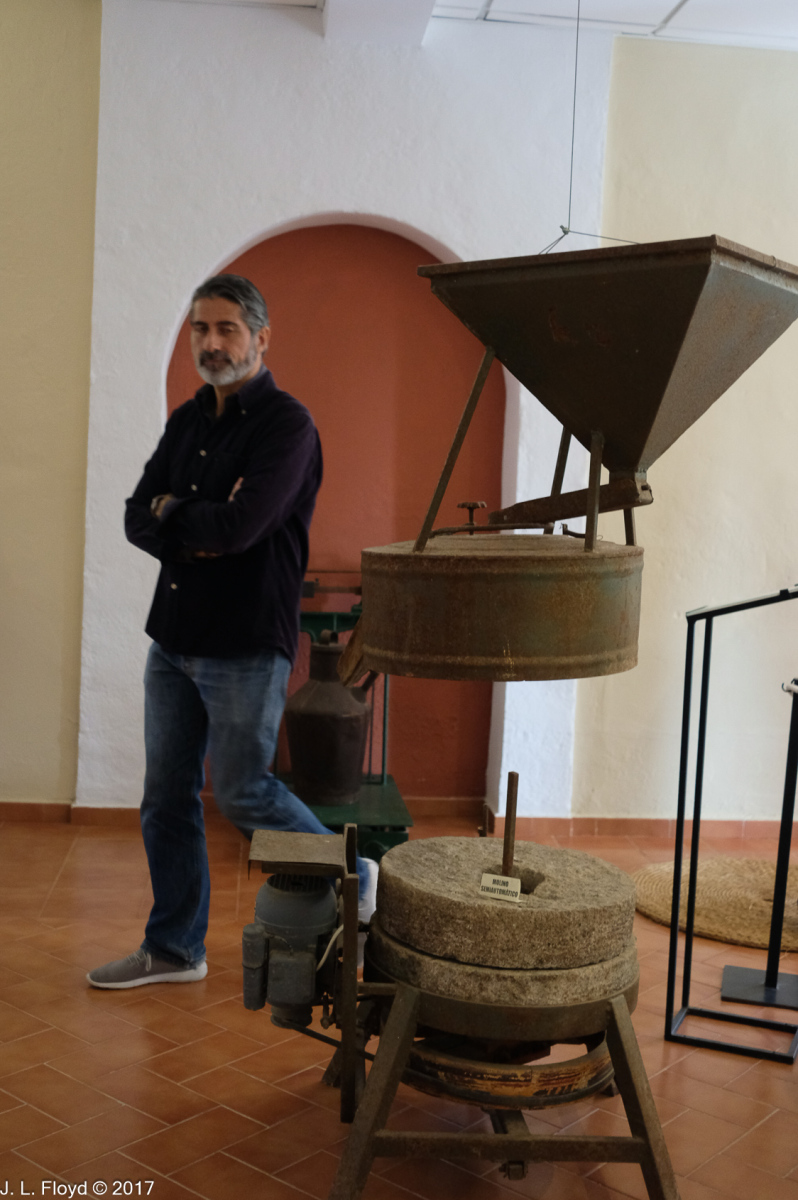Departing from Seville on the morning of November 8, 2017, our tour bus headed for Córdoba on the A-398 highway. stopped for lunch at Hacienda Merrha, home of the Basilippo olive oil firm.
According to a placard we encountered at the entrance, Andalusian olive oil estates are found in a limited area around Seville, and and often combine olive oil production with other agricultural and ranching activities. They are organized according to a typical and traditional pattern, which is followed at Hacienda Merrha: a central courtyard surrounded by a tool shed, the mill housing the olive press and other production facilities, and the family residence. There is also a bell tower, which traditionally is used to summon the workforce or sound alarms.
In our house Sandie and I cook mostly with olive oil, so we were quite interested to find out how olives are grown and processed. The host took us on a tour first of the groves, where he showed the various types of olive trees and explained how they differ from one another. Fortunately, although I am extremely allergic to olive tree pollen (though not to olive oil), this wasn’t the time of year when it is encountered, so I experienced no ill effects while wandering through the olive groves. Not from the olive trees, anyway. At one point a madman, probably a refugee from the local asylum, came leaping into the grove, gesticulating wildly and waving a cell phone, but he soon calmed down when offered a jar of Basilippo olives for lunch.
Our host, the proprietor of the hacienda, explained to us the varieties of olives, or cultivars, grown on the estate. There were two main cultivars, described as follows:
Manzanilla: a large, rounded-oval fruit, with purple-green skin, which originated in the Seville area. “Manzanillas” means “little apples” in Spanish. Known for a rich taste and thick pulp, it is a prolific bearer, grown around the world.
Zorzaleña: an alternate name for Lechín de Sevilla, an important variety in Andalusia, grown predominantly in the province of Seville, but also cultivated in the bordering provinces of Cordoba, Cadiz, and the Málaga. The oil has a fruitiness with the presence of green, bitter, light almond, and pungent attributes that is slightly astringent and smooth on the palate.
We observed pickers at work in the groves, but they turned out to be cardboard cutouts. Nowadays, our host explained, they had machines that grabbed the trees by the trunk and shook them until the ripe olives fell off into bins placed around the trees.
Next our host ushered us into the ranch house, which on a traditional olive ranch would provide the living quarters of the proprietor’s family; but here it is the company showroom, where the host gives talks and shows videos of the olive oil production process. There are also displays of the estate in miniature illustrating the various steps of production, as well as actual equipment used in earlier times, i.e. before the advent of modern machinery.
The ranch house was also the setting for lunch, which culminated the tour of the estate. We were served a traditional Mediterranean-style lunch consisting of bread, cheese, and other goodies which included, of course, wonderful Basilippo-grown olives.
After lunch we re-boarded the tour bus and resumed our journey toward Córdoba. Somewhere along the way we saw a bright star in the distance, just above the horizon. Since it was broad daylight, this was an attention-getter. We soon discerned that it was an advanced type of solar power station which uses mirrors to focus sunlight upon a central tower, somewhat resembling a lighthouse, where the sunlight is concentrated and turned into electricity. Later I was able to look it up online and found out that this was the Gemasolar concentrated solar power project, inaugurated in 2011, in the town of Fuentes de Sevilla. It was the first solar plant in the world to use molten salt heat storage technology as a means for converting the energy of sunlight into electricity. According to its web page it was built by Torresol Energy Investments, a joint venture of Abu Dhabi-based renewable energy firm Masdar and Spanish engineering firm Sener, who own the plant in a 60-40% relationship, respectively. It is a small-scale operation, generating about 20 megawatts and providing electricity for 25,000 homes; but in pioneering this technology it paved the way for much more large-scale plants to come, such as a 690-megawatt plant near Las Vegas, Nevada. I was elated to find out that Spain is at the forefront of this technology, which potentially can provide enormous reductions in greenhouse gas generation over fossil fuels; the small-scale Fuentes de Sevilla plant alone reduces about 30,000 tons of carbon dioxide emissions per year.
